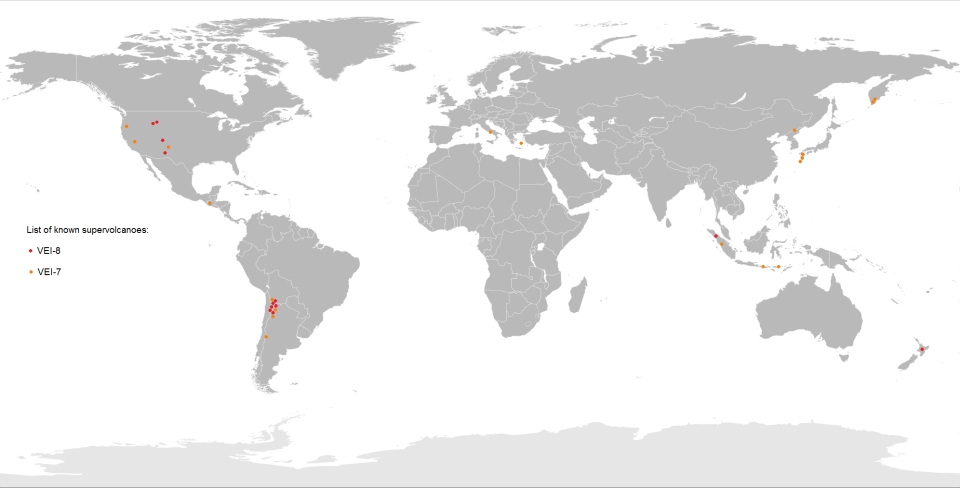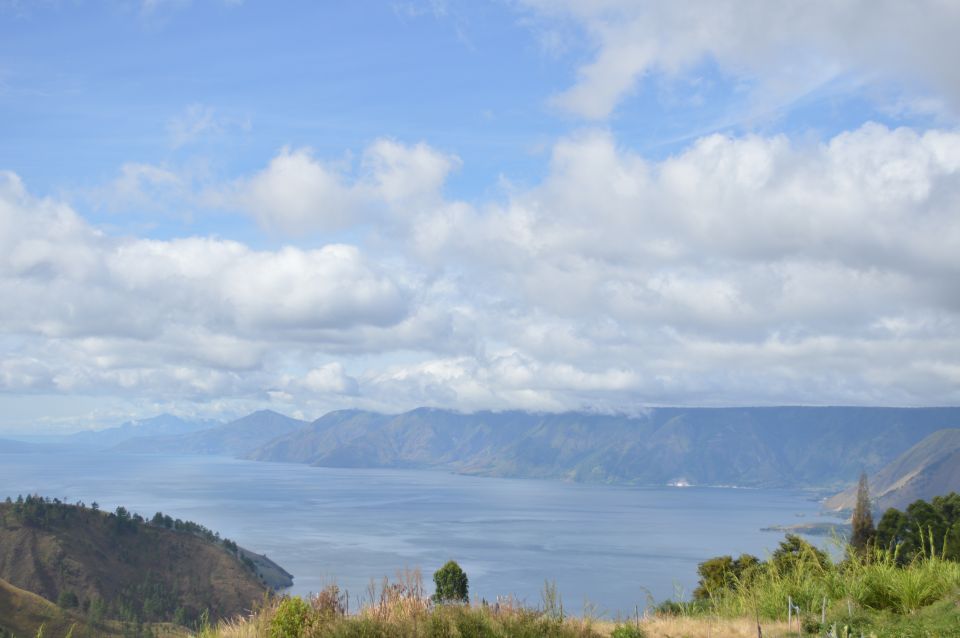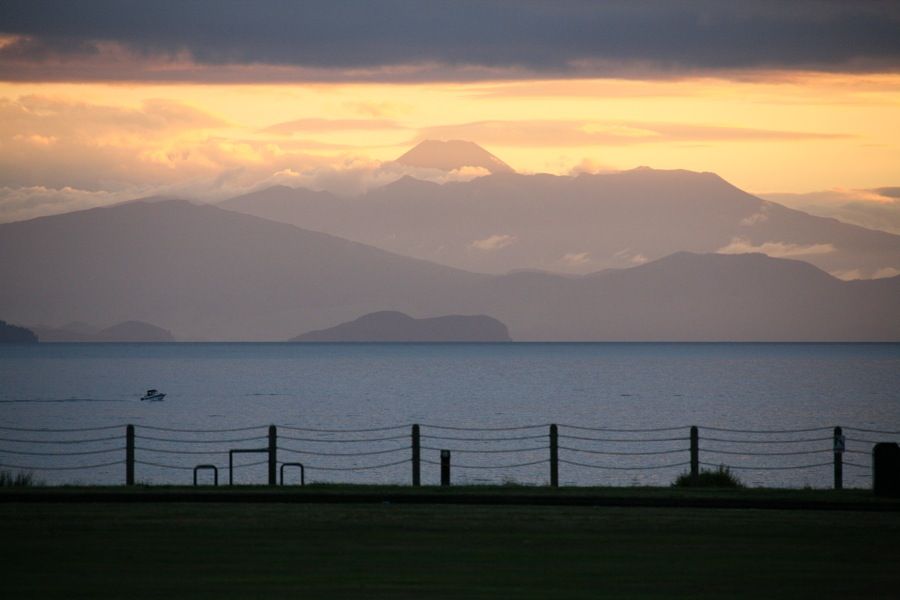What is a supervolcano?
A supervolcano is a volcanic centre that has had a very large eruption in the past. Volcanic eruptions are classified using the Volcanic Explosivity Index, or VEI. Like with earthquake magnitude the VEI is a logarithmic scale. This means that an increase of one in VEI number is equivalent to a tenfold increase in volume of erupted material.
A supervolcano is a large volcano that has had an eruption of magnitude 8, which is the largest value on the VEI. These eruptions deposit more than 1,000 cubic kilometres of ash and pumice. Eruptions of this size usually create a caldera or depression. This is because so much material has erupted out of the magma chamber the ground above collapses.
Even though supervolcanoes have had huge eruptions in the past they can also have much smaller eruptions.
How do supervolcanoes form?
Supervolcanoes occur when magma in the mantle rises into the crust but the magma can’t break through. Pressure builds in a large and growing magma pool until the crust is unable to contain the pressure. This can occur at hotspots or at subduction zones.
What happens during a super-eruption?
Super-eruptions are dominated by explosive activity, where the erupting magma is torn apart by gases dissolved in it. There are two different kinds of activity in a super-eruption:
- A tall plume of ash rising into the air.
- Fragments moving down the slope of the volcano as a hot liquid known as a pyroclastic flow.
A pyroclastic flow is very dangerous and destructive but only travels a few kilometres. Plumes of ash can spread over vast areas.
A super eruption in the Taupō Volcanic Zone could cover most of the North Island in over a metre of ash, depending on the wind direction during the eruption.
Supervolcanic eruptions can cover huge areas with lava and volcanic ash. The spread of ash in the atmosphere can cause long-lasting climate change as the ash stops energy from the sun reaching the Earth’s surface. Super-eruptions could cause a lowering of temperatures and trigger an ice-age.
In the last 2.6 million years there have been 10 super-eruptions worldwide. Four of these have been in the Taupō Volcanic Zone. The other super-eruptions during this time include:
- Yellowstone – Idaho, United States
- Long Valley – Eastern California, United States
- Toba – Sumatra, Indonesia
- Cerro Galán - Argentina
The Oruanui eruption of New Zealand's Taupō volcano (about 26,500 years ago) was the world's most recent super eruption.
Ready for a quiz? Try the "Supervolcanoes" activity.






